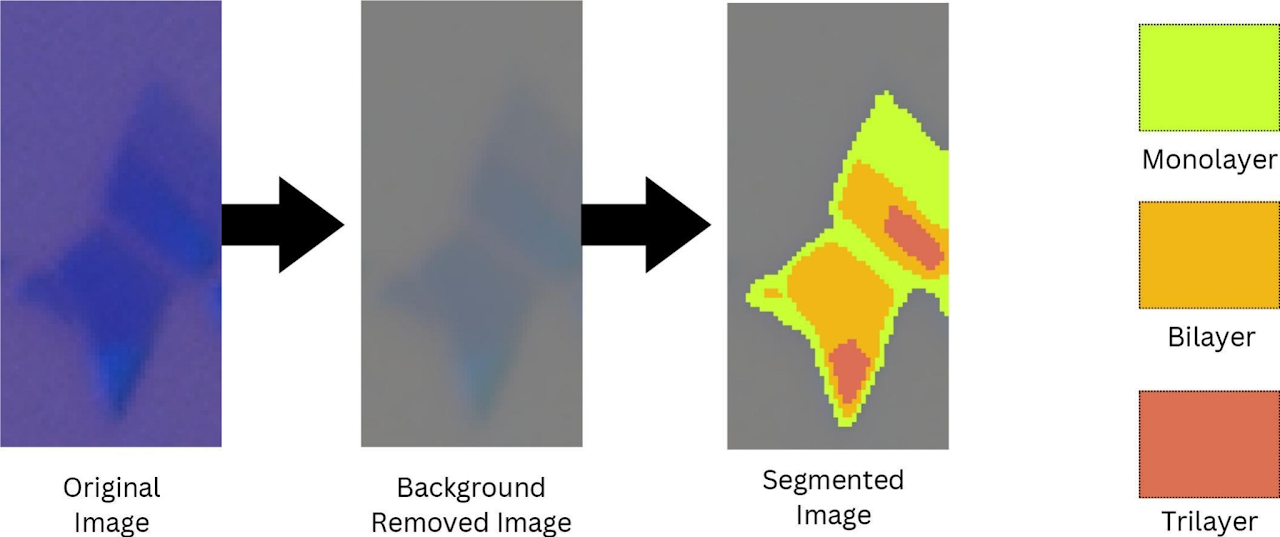Optical image analysis of WSe2 − thresholding for layer detection
Published in Computational Materials Science, 2025
DOI: https://doi.org/10.1016/j.commatsci.2025.113888
Abstract
The fast and reliable layer identification of two-dimensional transition metal dichalcogenide (TMD), such as WSe2, is essential to investigating their thickness-dependent electronic and optical properties. This article presents efficient optical image thresholding methodology designed to segment the mono, bi, and tri-layer regions of WSe2 flakes mechanically exfoliated onto a SiO2/Si substrate. The optical images were first preprocessed to exclude the background effect and analyzed using the pixel medians and interquartile ranges for fundamental color channels—red, green, and blue (RGB). The analysis of red channel pixel intensities yielded three distinct ranges, serving as thresholds for layer segmentation: monolayer (111.0–118.0), bilayer (103.0–110.0), and tri-layer (93.0–103.0). Similarly, thresholds were established for each color channel, facilitating a comparative study of the segmentation performances. The intersection-over-union $(IoU)$ calculations revealed that the red and green channels demonstrated greater than 99 % and 90 % accuracy in differentiating each layer, respectively. This approach yields remarkable results without substantial data calibration that utilizes time-intensive heuristic techniques. Moreover, the proposed methodology offers the flexibility to compare performances across different color channels, expanding the applicability for other 2D material systems.

